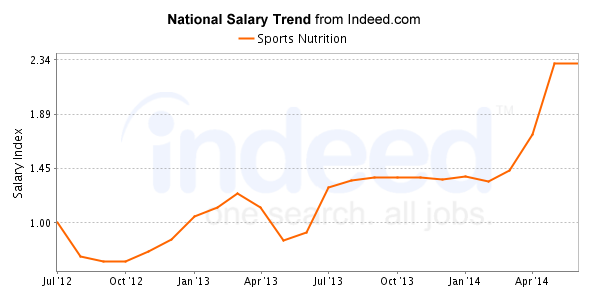Sports nutrition brand 7 little words
The first step toward becoming a Board Certified Specialist in Sports Dietetics is to become a Registered Dietitian (RD). There are several different options students can take to be eligible to sit for the RD exam is winport casino legit. The most straight forward path is to complete an accredited dietary program and earn a bachelor’s degree granted by a USDE recognized institution.
A degree in nutrition and dietetics can take between 4-5 years to complete. Coursework will usually include medical nutrition therapy, food science, counseling, and some sports nutrition. There are some programs available with a greater focus on sports nutrition, but most programs are more generally focused. You can also consider double majoring in nutrition and exercise science. This was the undergraduate route that I took at the University of Nebraska-Lincoln. I received Bachelor’s of Science degrees in both Dietetics and Exercise Science.
Even sports nutritionists that are not legally obligated to become certified or licensed professionals often earn credentials through a national credentialing agency such as the Commission on Dietetic Registration (CDR) to establish professional competency in the field.
Sports nutrition jobs
Hosted by Dr Laurent Bannock, the We Do Science Podcast features expert practitioners and academics, providing valuable insights into their work, helping provide you with the tips and insights you need as a current or aspiring Sport and Exercise Nutritionist.

Hosted by Dr Laurent Bannock, the We Do Science Podcast features expert practitioners and academics, providing valuable insights into their work, helping provide you with the tips and insights you need as a current or aspiring Sport and Exercise Nutritionist.
Jobs in sports nutrition require at least a bachelor’s degree in nutrition, often a master’s degree and status as a Registered Dietitian is required. In addition, sports nutrition jobs require a deep knowledge of how food relates to physical performance and familiarity with sport nutrition supplements on the market including safety concerns, allowance of use by athletic authorities, appropriate uses and ideal doses.
Sports Nutritionists with one to four years of experience in the field can expect to make salaries ranging from $34,392 to $59,495 per year. Most dietitians and nutritionists working for a company can expect to make $33,433 to $61,000 per year with a median salary of $42,261. Those working for non-profit organizations such as community recreation centers can expect to earn salaries ranging from $39,786 to $53,145.
Fitness-focused nutrition jobs can be found in many commercial gyms and fitness centers, as well as community centers such as YMCAs. Individuals will need at least a bachelor’s degree in a nutrition program to qualify for this type of job and in some cases a Registered Dietitian is required.
A nutritionist or dietitian working in a fitness setting provides nutrition consultations for members and offers eating plans for weight loss and improved health. In addition, the development of nutrition education programs, creating handouts and writing newsletter articles are all possible duties in this position.
International society sports nutrition
While a great deal of work has focused on post-exercise protein ingestion, other studies have suggested that pre-exercise and even intra-exercise ingestion may also support favorable changes in MPS and muscle protein breakdown . Initially, Tipton and colleagues directly compared immediate pre-exercise and immediate post-exercise ingestion of a mixture of carbohydrate (35 g) and EAAs (6 g) combination on changes in MPS. They reported that pre-exercise ingestion promoted higher rates of MPS while also demonstrating that nutrient ingestion prior to exercise increased nutrient delivery to a much greater extent than other (immediate or one hour post-exercise) time points. These results were later challenged by Fujita in 2009 who employed an identical study design with a different tracer incorporation approach and concluded there was no difference between pre- or post-exercise ingestion . Subsequent work by Tipton also found that similar elevated rates of MPS were achieved when ingesting 20 g of a whey protein isolate immediately before or immediately after resistance exercise.
The International Society of Sports Nutrition (ISSN) provides an objective and critical review related to the intake of protein for healthy, exercising individuals. Based on the current available literature, the position of the Society is as follows:An acute exercise stimulus, particularly resistance exercise, and protein ingestion both stimulate muscle protein synthesis (MPS) and are synergistic when protein consumption occurs before or after resistance exercise.For building muscle mass and for maintaining muscle mass through a positive muscle protein balance, an overall daily protein intake in the range of 1.4-2.0 g protein/kg body weight/day (g/kg/d) is sufficient for most exercising individuals, a value that falls in line within the Acceptable Macronutrient Distribution Range published by the Institute of Medicine for protein.Higher protein intakes (2.3-3.1 g/kg/d) may be needed to maximize the retention of lean body mass in resistance-trained subjects during hypocaloric periods.There is novel evidence that suggests higher protein intakes (>3.0 g/kg/d) may have positive effects on body composition in resistance-trained individuals (i.e., promote loss of fat mass).Recommendations regarding the optimal protein intake per serving for athletes to maximize MPS are mixed and are dependent upon age and recent resistance exercise stimuli. General recommendations are 0.25 g of a high-quality protein per kg of body weight, or an absolute dose of 20-40 g.Acute protein doses should strive to contain 700-3000 mg of leucine and/or a higher relative leucine content, in addition to a balanced array of the essential amino acids (EAAs).These protein doses should ideally be evenly distributed, every 3-4 h, across the day.The optimal time period during which to ingest protein is likely a matter of individual tolerance, since benefits are derived from pre- or post-workout ingestion; however, the anabolic effect of exercise is long-lasting (at least 24 h), but likely diminishes with increasing time post-exercise.While it is possible for physically active individuals to obtain their daily protein requirements through the consumption of whole foods, supplementation is a practical way of ensuring intake of adequate protein quality and quantity, while minimizing caloric intake, particularly for athletes who typically complete high volumes of training. Rapidly digested proteins that contain high proportions of essential amino acids (EAAs) and adequate leucine, are most effective in stimulating MPS. Different types and quality of protein can affect amino acid bioavailability following protein supplementation. Athletes should consider focusing on whole food sources of protein that contain all of the EAAs (i.e., it is the EAAs that are required to stimulate MPS). Endurance athletes should focus on achieving adequate carbohydrate intake to promote optimal performance; the addition of protein may help to offset muscle damage and promote recovery. Pre-sleep casein protein intake (30-40 g) provides increases in overnight MPS and metabolic rate without influencing lipolysis.
Physical training produces changes in the extracellular and intracellular concentrations of trace minerals elements. To our knowledge, only three compartments have been studied simultaneously. The aim of the p…
There are 20 total amino acids, comprised of 9 EAAs and 11 non-essential amino acids (NEAAs). EAAs cannot be produced in the body and therefore must be consumed in the diet. Several methods exist to determine protein quality such as Chemical Score, Protein Efficiency Ratio, Biological Value, Protein Digestibility-Corrected Amino Acid Score (PDCAAS) and most recently, the Indicator Amino Acid Oxidation (IAAO) technique. Ultimately, in vivo protein quality is typically defined as how effective a protein is at stimulating MPS and promoting muscle hypertrophy . Overall, research has shown that products containing animal and dairy-based proteins contain the highest percentage of EAAs and result in greater hypertrophy and protein synthesis following resistance training when compared to a vegetarian protein-matched control, which typically lacks one or more EAAs .
Armed sports nutrition
A tactical athlete’s nutrition plan should emphasize protein, carbohydrates, and fluids. These nutrients are needed to fuel energy and to build new muscle tissue. It is also important to limit fat and fibre intake.
Optimal vitamin D status is also critical. Studies have found that an optimal level of vitamin D is related to neuromuscular coordination, maximum oxygen consumption, and optimal muscle protein synthesis.
Energy deficiency is a widespread problem among military personnel while on operations or exercises. Many studies have measured total energy expenditure, body mass, and energy balance and try to use the data to help avoid soldier burnout, injury and fatigue.
Creatine is an organic compound that is present in human muscle and brain tissue. It is made up of three amino acids: L-arginine, L-methionine and glycine. Taking creatine orally increases muscle strength and endurance.
As many as one-in-ten supplements are contaminated with ingredients and compounds prohibited in sport. As a result, many athletes fail doping tests because of the supplement products they use. According to a study carried out by the Anti-Doping Knowledge Centre, product contamination was responsible for 8% of all anti-doping violations between 2105-2022.
